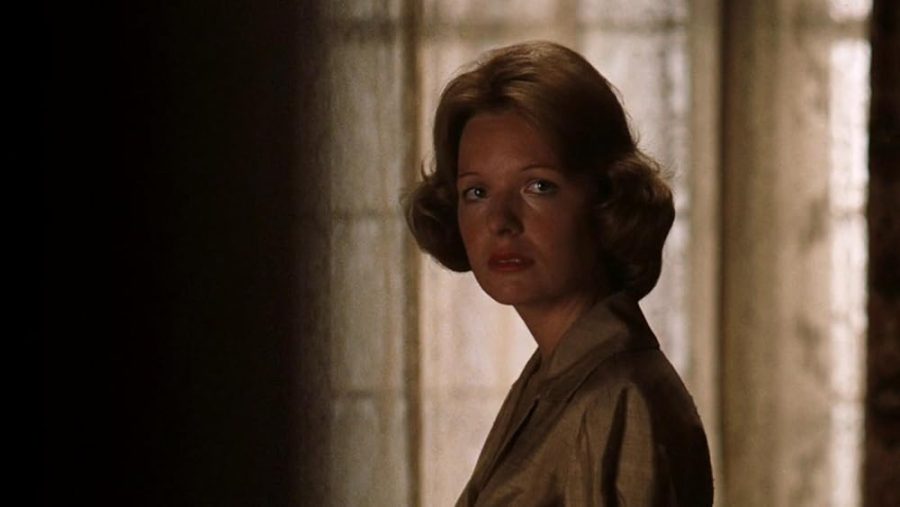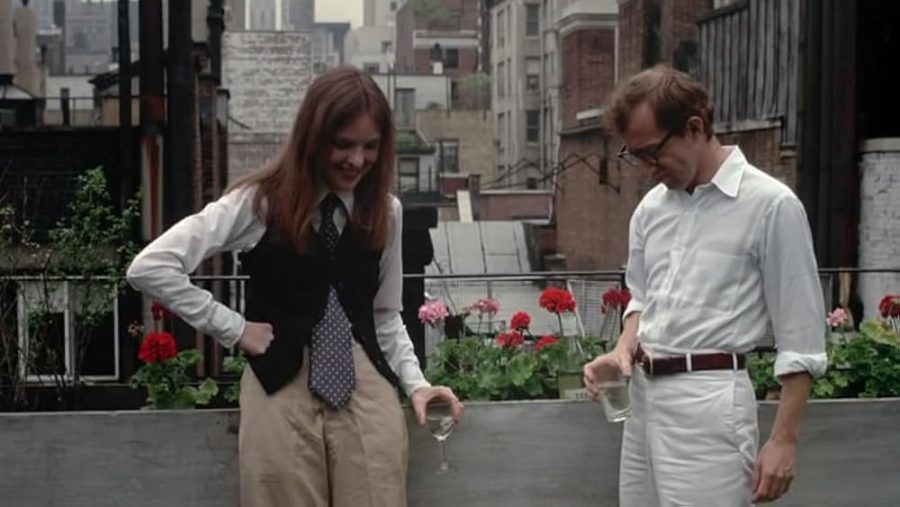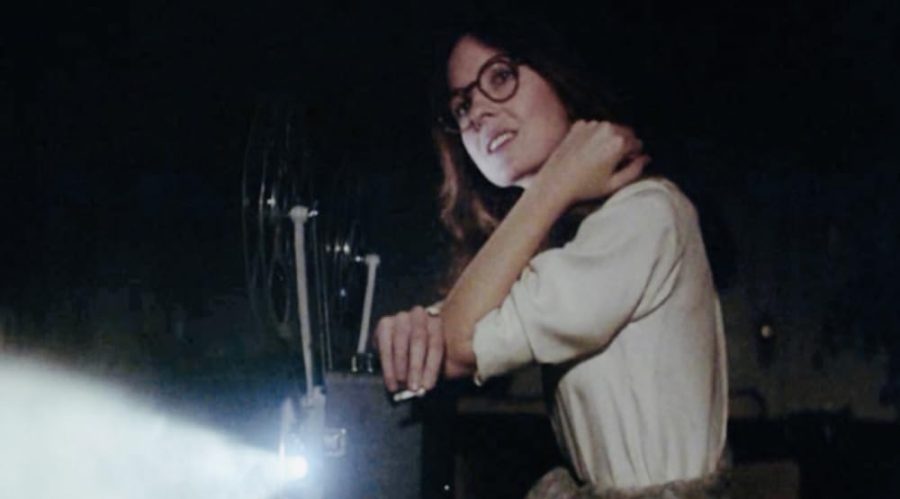Diane Keaton Was Never Just Annie Hall
From The Godfather to Reds to Something's Gotta Give, Diane Keaton moved between comedy and drama with ease, turning self-doubt and control into the twin engines of her art. Across decades of self-invention, she built a career that was unmistakably her own.

Diane Keaton (1946–2025), seen here in her Oscar-nominated performance as journalist and suffragist Louise Bryant in Warren Beatty’s 1981 film, Reds (Paramount Pictures)
For all the self-assuredness that Diane Keaton, who sadly passed away earlier this month, brought to her on-screen performances, there always was a hint of restlessness about her. A wonderfully gifted, wide-ranging actress capable of doing everything from deep psychodrama to light comedy, Keaton often seemed to be searching for something just out of reach. Sometimes it was a deeper emotional truth in the characters she played. Sometimes it was the perfect place to live, a pursuit that gained her notoriety as a restorer of historic homes. And sometimes it was physical perfection, a fixation that revealed itself in her long struggle with anorexia, complications of which were said to play a role in her death. For better and for worse, Keaton was a perfectionist: never satisfied with the high standards she set for herself, always striving to go a little further.
She remained powerfully iconoclastic — in her performances, her career choices, and even in her preparation for movie roles. In an interview, Jack Nicholson recalled how Keaton would, unlike most Hollywood actors, memorize entire scripts before filming started, rather than learning her lines scene by scene. That discipline reflected her roots in theater — an unusual background for an actress born and raised in Los Angeles, who didn’t find real success until she moved to New York, started out in independent stage productions, and eventually made it to Broadway. It was there, starring in Woody Allen’s play Play It Again, Sam — a wry riff on Casablanca — that she found her breakout role and her path to film stardom.
Mafia Matriarch and Movie Muse
Keaton went on to star opposite Allen in a number of his films, including Sleeper, Love and Death, and — most famously — Annie Hall, becoming both a close collaborator and, for a time, romantic partner. Her performances also caught the attention of a young Francis Ford Coppola who cast her in The Godfather as Kay Adams, the naive young fiancé and later long-suffering wife of Michael Corleone (played by Al Pacino). Despite limited screen time and the hypermasculine world of the film, Keaton managed to convey the devastating toll of organized crime and violence on the family members of mafiosi. Her portrayal effectively made her the emotional core of the Godfather saga, with Michael’s final descent into moral ruin marked by his brutal rejection of Kay.

If The Godfather revealed Keaton’s capacity for quiet moral gravity, Annie Hall, showcased her radiant charm and comic intelligence. The film, written specifically for her by Allen, became the vehicle that really propelled Keaton into the limelight. While Allen gave most of the better one-liners to his own character, Alvy Singer, Keaton’s Annie Hall (Hall was Keaton’s birth name; she adopted her mother’s maiden name after discovering that another Diane Hall was already registered with the New York actor’s union) became one of cinema’s most enduring characters. In many ways, Annie Hall was the prototype for the “manic pixie dream girl”: a quirky, searching woman who reinvents herself through costume and persona, ultimately finding a measure of inner peace, albeit one that requires her to leave Alvy behind. The film also showcased Keaton’s talents as singer, with her character delivering a memorable nightclub performance in the first act.

Keaton’s Political Phase and Its Discontents
Another key early Keaton film performance came in her starring role in Richard Brooks’s 1977 feminist film, Looking for Mr. Goodbar, where she plays a young public school teacher who finds herself torn between her personal sexual awakening, her sense of self, and her strict Catholic upbringing. The film’s bleak ending made it controversial at the time and was largely pilloried by critics, though Keaton’s performance drew praise. It has since become something of a cult curiosity, and with good reason. Keaton is at her best here, portraying a woman drawn into danger by her pursuit of the fulfillment her upbringing denied her. The role can be read as a microcosm of Keaton’s career: an actress of almost preternatural ability to convey emotional depth on screen, but one who struggled with personal demons.

1979’s Manhattan marked Keaton’s last collaboration with Woody Allen — until a brief reunion in the 1990s — and the end of their romantic relationship. She began moving toward more dramatic roles in the vein of Looking for Mr. Goodbar, playing troubled women with complex inner lives. These included Shoot the Moon, opposite Albert Finney, and most notably, her academy award–nominated performance in Warren Beaty’s 1981 film, Reds.
Reds dramatized the lives of suffragist and journalist Louise Bryant (Keaton) and her relationship with radical journalist John Reed (played by Beatty) as they cover early labor struggles and, eventually, the 1917 Russian Revolution. Though the film nods to the darker turn of the Soviet experiment, it portrays Reed’s enduring commitment to revolution alongside Bryant’s more ambivalent reckoning with the personal costs of conviction. Keaton grounded the story in the human and emotional dimensions of commitment and loss, giving a tour-de-force performance that balanced love, loyalty, and idealism.
Another major Keaton role came in the1986 black comedy, Crimes of the Heart. Starring alongside Sissy Spacek and Jessica Lange, Keaton played one of the three Magrath sisters who reunite in their childhood home in smalltown Mississippi after the youngest sister murders her abusive husband. Hovering between Southern gothic melodrama and pitch-black comedy, the film showcased Keaton as the steadying presence, providing a straight foil for Spacek and Lange and demonstrating her gift for ensemble work and instinct for elevating her costars.
From Actress to Auteur
Keaton continued to work steadily throughout her life and showed considerable skill behind the camera, both as a photographer and eventually as a director. Her directorial efforts included the 1987 avant-garde documentary Heaven, which explored people’s experience and perception of the afterlife — a lifelong fascination of Keaton’s, though she identified as a religious agnostic — and the 1991 film Wildflower about an abused deaf girl helped by two children to reintegrate into society. She also directed a highly memorable episode of the seminal David Lynch show, Twin Peaks. Beyond film, Keaton became a champion of Spanish Colonial Revival architecture and helped to save and restore a number of important architectural marvels throughout her native California, including the famous Frank Lloyd Wright–designed Ennis House in the Hollywood Hills.
Despite her poise and confidence onscreen, Keaton suffered from anorexia on and off for years, a casualty of Los Angeles diet culture and her seeming perfectionist tendencies, which extended to appearance as well. She was romantically entangled with a number of her collaborators over the years, including the aforementioned Woody Allen, as well as Al Pacino, and Warren Beaty, and remained on good terms with all of them — each speaking warmly of her in later years. Despite these relationships, she never married and raised her two adopted children on her own. An intensely private person, Keaton was quiet about her health issues, and her death on October 11 came as a shock.
Whether in a light romantic comedy or a heavy psychological drama, Keaton was always a luminous presence on-screen. Her performances were always attuned to the demands of the material; she never overacted or phoned it in. She remains one of cinema’s all-time greats — an actress of extraordinary subtlety, intelligence, and depth. In an era of typecasting, Keaton stood apart as a true chameleon, moving effortlessly between genres while bringing intense preparation and thoughtful precision to every role.